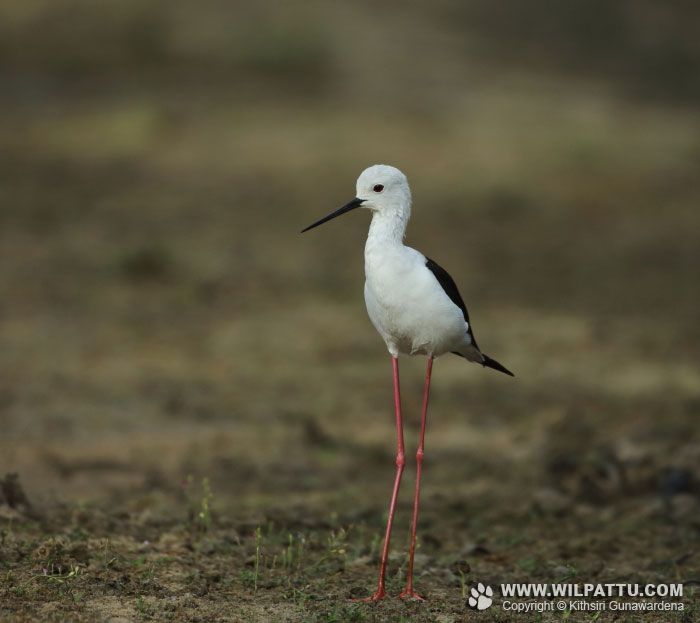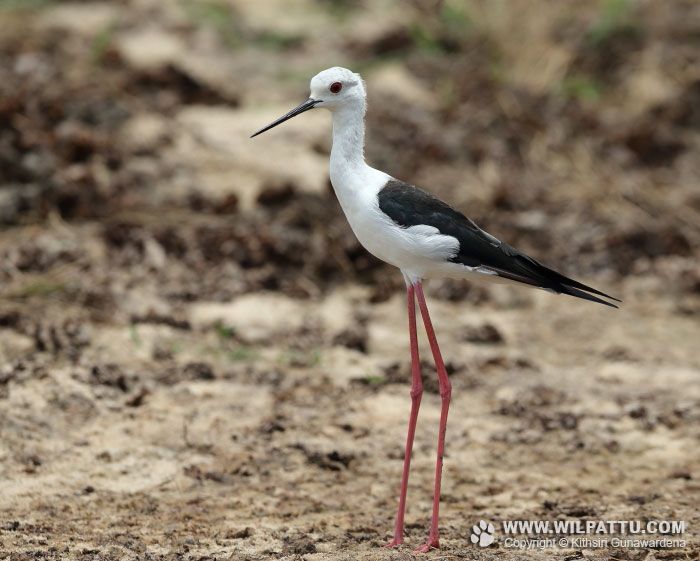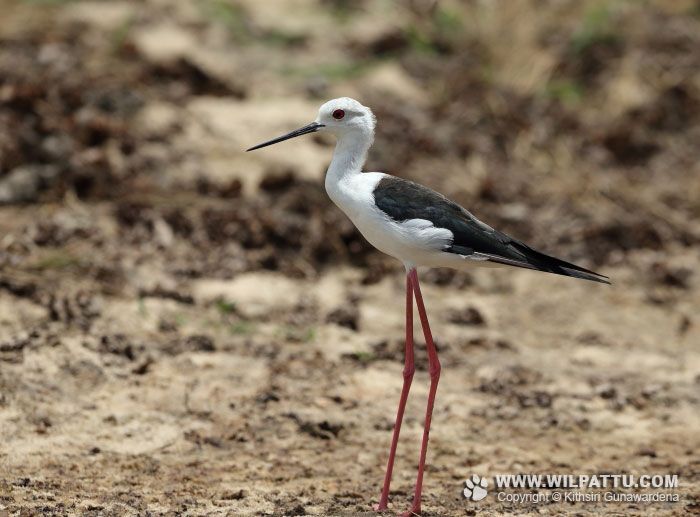
Birds ‹‹ Go Back
This is a breeding resident found through out the dry lowlands and a common migrant to the wet zone areas during the winter months. In 2009, however, breeding was recorded in a wet zone paddy field at Palawatta and since then there are records of breeding from many locations in the wet zone as well. Five subspecies of this species have been recognized based mainly on the amount of white and black on the head and hind neck.
- Black-winged Stilt H.h.himantopus - found from western Europe and the Mediterranean region to Central Asia, sub – Saharan Africa and Madagascar, South and Southeast Asia.
- Black-necked Stilt H.h.mexicanus - found from North America through Central America and the Caribbean to northern Peru and northeastern Brazil.
- White-backed Stilt H.h.melanurus – found in South America from central Peru and northern Chile to southeastern Brazil and south to south-central Argentina.
- White-headed Stilt H.h. leucocephalus – found in Java, New Guinea, Australia and New Zealand.
- Hawaiian Stilt H.h. knudseni – found in Hawaiian Islands.
The northern populations of each subspecies usually migrate towards the south during winter where they become quite wide spread.
It is proposed that the sub species found in Sri Lanka be treated as a separate subspecies H.h.ceylonensis.
The conservation status of this species is regarded as Least Concerned (National Red List 2012).
This is a species protected under the Fauna and Flora Protection Ordinance as amended by Act No. 22 of 2009.
I have seen this bird in all the dry zone national parks and it is a common species near most water bodies including inland fresh water bodies and lagoons in the lowlands. It is very common in the Jaffna Peninsular, Delft Island and the Mannar Island.
In June 2001 I observed many nests of this species at Atolla Kalapuwa at Kirinda. Both the male and the females were seen incubating the eggs. The eggs of two nests were measured with a vernia caliper. Each nest contained 4 eggs each. The measurements we as follows
- 4.3 x 3.1cm, 4.4 x 3.1cm, 4.5 x 3.1cm, 4.65 x 2.95cm
- 4.4 x 2.9cm, 4.4 x 3.2cm, 4.75 x 3.15cm, 4.1 x 3.15cm
These beautiful birds with strikingly coloureful long legs are usually the first species to give out alarm call upon detecting any danger. During the migrant season their numbers are supplemented by the wintering birds and flocks of up to 1000 to 2000 birds can be observed at locations such as Mannar and Bundala.
In Wilpattu they are not seen in large numbers but can be seen at many large water bodies such as Borupan Wila, Mahapatessa, Kudapatessa and Nelum Wila.



